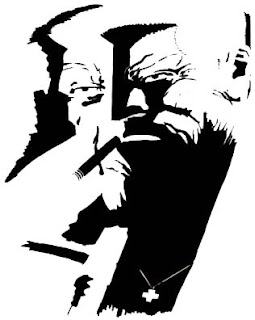 Harry Clarke is knon for his work on stained glass but he has extraordinary work on illustration. We could say that he's not only from the golden age but has also of pre-raphealite influence from the Victorian Age.
Harry Clarke is knon for his work on stained glass but he has extraordinary work on illustration. We could say that he's not only from the golden age but has also of pre-raphealite influence from the Victorian Age.He has a similar approach as Aubrey Beardsley. Atlhough I find his work more minute and intricate. What makes it similar somehow is the figure drawings. The facial aspects are enlongated and the figures are tall and scrawny. Another mark is it being mostly black and white.
But he does have the odd work in colour. This particular one is rare and back from the 1920's and it's from a series illustrating Hans Christian Andersern's FairyTales. Wow, absolutely astonishing.
Harry Clark is of Irish origin and son of Joshua Clarke. He was born in 1889 and died 1930. He did other works, such as illustrated the Edgar Alan Poe's Tales of Mystery and Imagination and much more. All of are breath taking. If you're looking for his work on stained glass, then you should hop over to Ireland and go past The Honan Chapel on the University Grounds of Cork.


